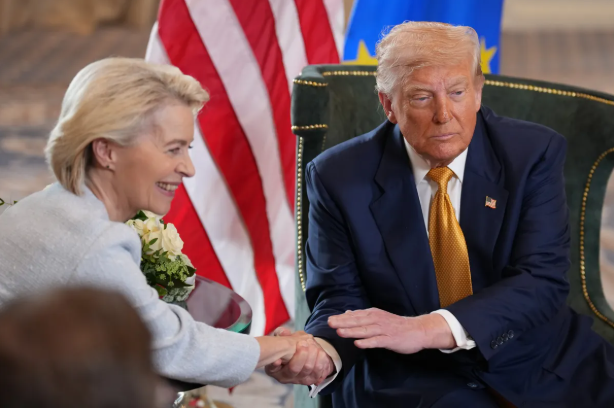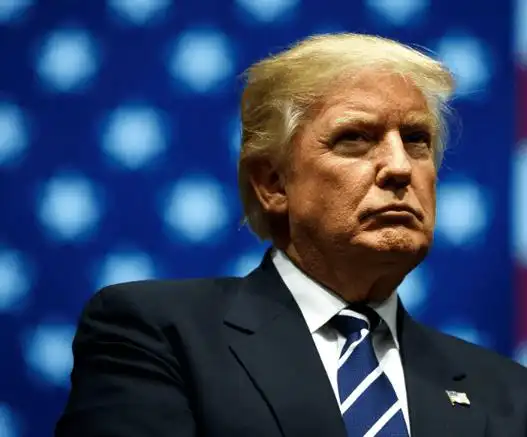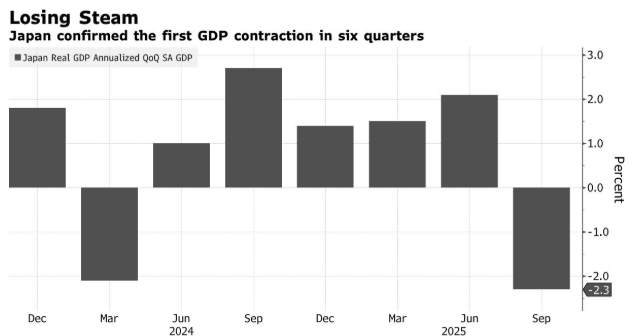This week, the EU avoided an impending trade war with the US, but the market and a growing number of critical voices dispelled earlier hopes that the deal would bring a sense of stability to transatlantic relations.
On Monday, the euro fell by more than 1% against the US dollar, marking its biggest drop in over two months. Previously, driven by expectations of an agreement with the United States, the euro soared to a nearly three-year high last week.
The EU agreed last weekend to impose a 15% tariff on most of its export products. Once the agreement takes effect, the average tariff rate on US goods in the EU should be reduced to below 1%. Brussels also said it would purchase US energy products worth 750 billion US dollars and invest an additional 600 billion US dollars in the United States.

Karin Karsbrol, a Swedish member of the European Parliament’s Trade Committee, said in a statement: “The principles of free trade that have supported transatlantic prosperity since the end of World War II are being systematically dismantled.” With each concession, the risk of economic and political marginalization in Europe is increasing.
German Chancellor Friedrich Meitz was initially pleased with the agreement, considering it a “success” in avoiding a trade conflict and enabling the EU to safeguard its interests, but he seemed dissatisfied with it.
“These tariffs will cause significant damage to the German economy,” he told reporters on Monday. I’m quite certain that this won’t be limited to Germany and Europe. We will also see the consequences of this trade policy in the United States.
French Prime Minister Francois Beroux also criticized on social media: “It’s a dark day for a coalition of free people to unite to confirm their values and defend their interests, yet choose to yield.”
According to a senior EU official, the EU and the US will seek to reach a non-binding joint statement by August 1, which will expand on some of the content reached in the weekend negotiations. After the statement is finalized, the United States will start to lower tariffs on specific industries, especially automobiles and their components. Currently, the tariff rate for these products is 27.5%.
The official, who declined to be named, said that the two sides would then start drafting a legally binding text. The content and legal form of this document remain unclear, but it requires the support of at least a specific majority of EU member states and may even need the support of the European Parliament.
Eu officials said it might take a long time to reach a consensus on the legal text. Many trade agreements require years of negotiations. The official said that the EU would only start to implement the provisions it had agreed to, such as reducing tariffs on US products, after the legal text was approved.
Oliver Lakau, chief German economist at Oxford Economics, said in a report: “The agreement eliminates some tail downside risks, but lacks details and needs to be finalized in the coming weeks, which could trigger new volatility.” Uncertainty may continue to rise.”
European Commission President Ursula von der Leyen said that the United States has agreed to bilaterally reduce tariffs on certain strategic products to zero, including aircraft and their components, certain generic drugs, semiconductor equipment and certain agricultural products.
One potential sticking point in the negotiations will be the EU’s metal exports, which currently have a tariff rate of 50%. According to EU officials, the EU is promoting a quota system for metals, which will reduce tariffs on a certain number of goods, while goods exceeding this quantity will be subject to a 50% tariff.
Axel Egert, the director general of the European Steel Association, said: “All the details regarding the European steel industry remain uncertain.”
Eu officials said they are currently discussing whether to exempt certain goods such as wine and spirits from the 15% tariff.
Another possible issue is that the EU has committed to purchasing US energy worth 750 billion US dollars within three years, which is an important part of ensuring an agreement is reached. However, it is hard to imagine how the EU could achieve such an ambitious procurement target in such a short period of time.
Last year, the total amount of energy imported by the United States from the European Union was less than 80 billion US dollars, far lower than the commitment made by von der Leyen to Trump. In 2024, the total energy exports of the United States will be slightly above 330 billion US dollars.
The EU’s commitment to invest an additional 600 billion US dollars in the United States also has problems. Eu officials said that this investment is only the sum of the total commitments made by various enterprises and is not a binding target because the European Commission is unable to commit to achieving this goal.
The uncertainty brought about by the trade war has put pressure on the economic forecast of the European Union. In May, the European Commission lowered its GDP growth forecast for this year to 1.1%. In November, the committee projected that GDP growth would reach 1.5%.
Despite criticism, the commission responsible for EU trade affairs still insists that this is the only course of action.
Eu Trade Commissioner Maros Sefjovic told reporters on Monday: “This is clearly the best agreement we can reach under very difficult circumstances.”


